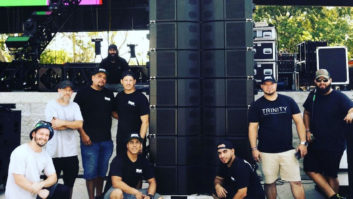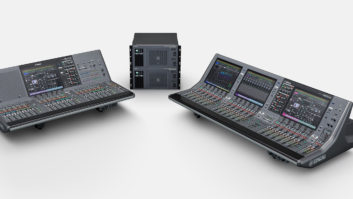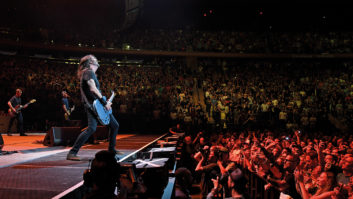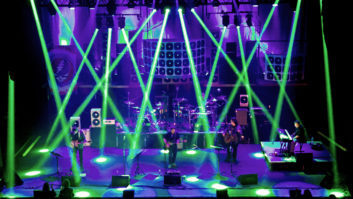
The core capabilities required in the live production space are about to be mission critical for a number of industries. This is because our return to school, the office, and elsewhere won’t be done with a snap of the fingers; instead, we will see hybrid models with social distancing considerations increasingly put in place.
This means high-quality audio needs to be provided to more, often larger locations—gymnasiums, cafeterias, outdoor spaces, conference spaces and more—and they’ll invariably require portable AV along with an element of rigging and de-rigging. For many, this will be a short-to-medium term solution. Thus, it is up to us as an industry to do two things: provide the near-term fix using scalable and flexible solutions, and craft a plan that helps realize live sound in these spaces long term.
That second part might sound tricky, but consider this: not only does it offer the traditional benefits of live sound (i.e. the ability to host events, live performances) but it is a redefinition of fault tolerance. Yes, if we do this correctly, we can prepare our schools, businesses, and other places of prominence for the possibility that social distancing becomes an intermittent part of life. If we do this correctly, there are no more sudden shutdowns, but rather transitions to a pro sound environment that provides more flexibility and continuity.
Let’s consider some of the hybrid uses we are currently working on. And, be assured, these are actual asks pro-audio manufacturers are hearing from both installers and end users.
Schools: The K-12 market is looking at transforming larger spaces on campus—gyms, cafeterias, auditoriums—into classrooms where social distancing can be maintained. This will absolutely require the need for sound in all locations, and keeping sound precisely on the students—and off reflective surfaces in these cavernous locations—will be critical. The same story can be applied to Higher Education, but at much greater scale; because universities tend to have even larger spaces for gatherings, the need for portable AV becomes even more critical.
Corporate: The business world is heavily relying on conferencing solutions. These will continue to be used as we return to the office in a hybrid model. Conference rooms will see a reduction in capacity; however, the number of people who should be in a meeting doesn’t change. Similar to the education market, this requires a rethinking of the rooms used for meeting.
Worship: The contemporary house of worship world has generally always mirrored the live and performance install trends. But what we’ll likely see come December is a need to expand access to holiday pageants. This is a two-pronged upgrade that can be done – both in the short-term and long-term—and includes both on-premises participation and streaming.
First, the obvious need is to find spaces where participants can be safely distanced and expand the audio coverage there. However, unique scenarios such as drive-in services can still exist in the warmer climates. Suddenly, you see some solutions that have crossovers with outdoor arenas.
Secondly, many churches are finding when they move to a hybrid model of streaming video and in-person service, their on-site audio drowns out the video feed’s sound. There’s a fix for this—and the live sound world knows exactly how to do it.
Renkus-Heinz Unveils SX/SA28 S Series Subwoofer
Because these systems need to be integrated quickly and effectively—and, potentially, moved at some point—it’s likely a distributed system won’t fit the bill. Instead, look to digitally steerable solutions that can place sound with precision. Digital beam steering allows for audio to be kept away from the reflective surfaces common in these atypical environments, and instead puts it where you want it most: on the audience. Further, these systems not only allow for quick setup, but they are also easily movable, and they can also be quickly reprogrammed. Simply put, digitally steerable solutions allow for easy setup, easy programming, flexibility in use, and impressive intelligibility of sound.
Many out there need the skills of the production and corporate AV sectors—they just don’t know it yet. Now is the time to show your collaborative approach, presenting them with ideas for improving things right now and long term. Come up with rental agreements, long-term uses, or fault tolerance plans that allow these live sound upgrades to remain viable. But, most importantly, show them the passion the industry has for getting things back to normal. At the end of the day, we work in the communication business: We help people share their ideas, dreams, thoughts, and hopes. Let’s bring that passion to these new spaces for live sound.
Graham Hendry is vice president of Strategic Development for Renkus-Heinz.
Renkus-Heinz • www.renkus-heinz.com







